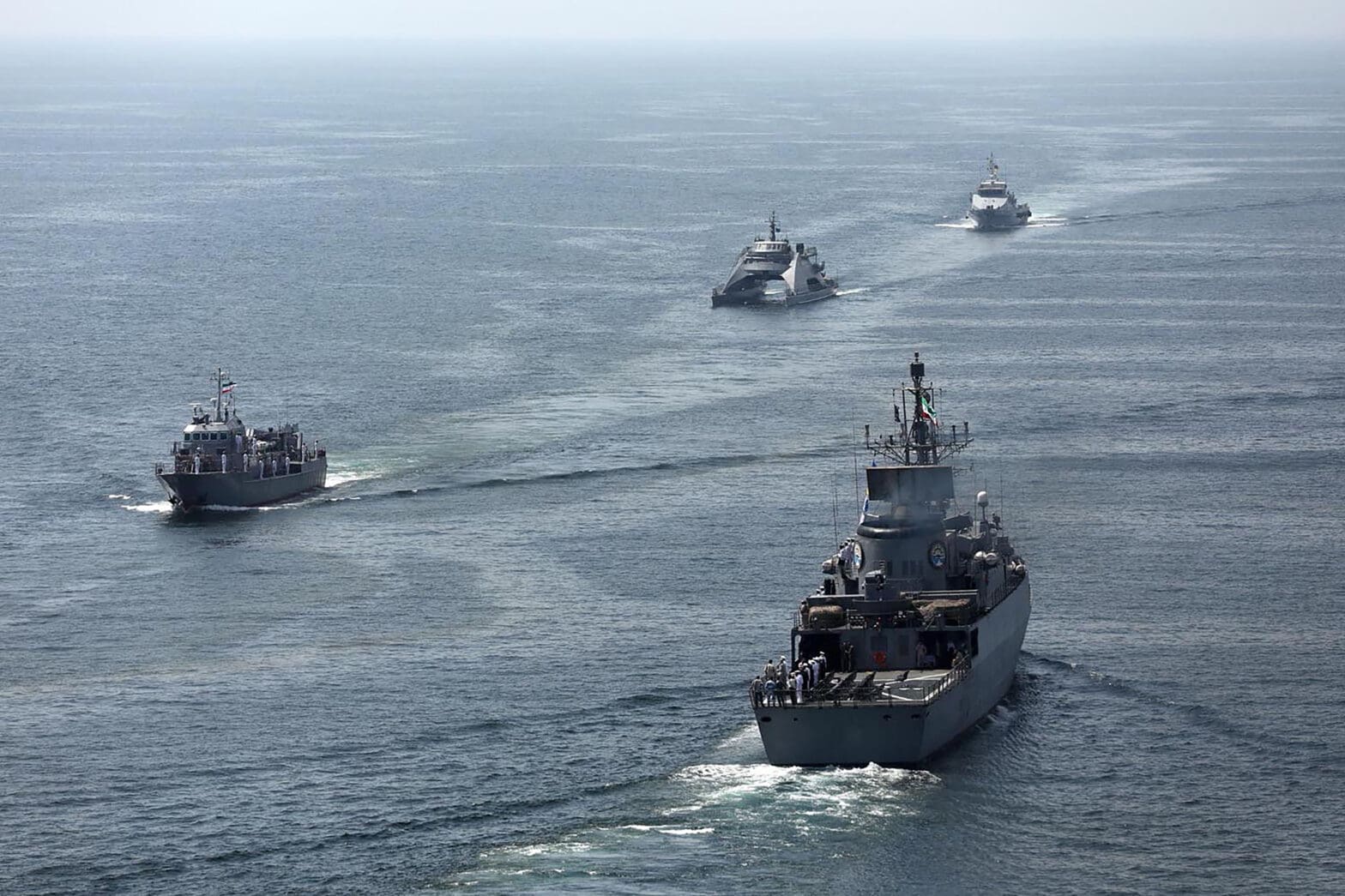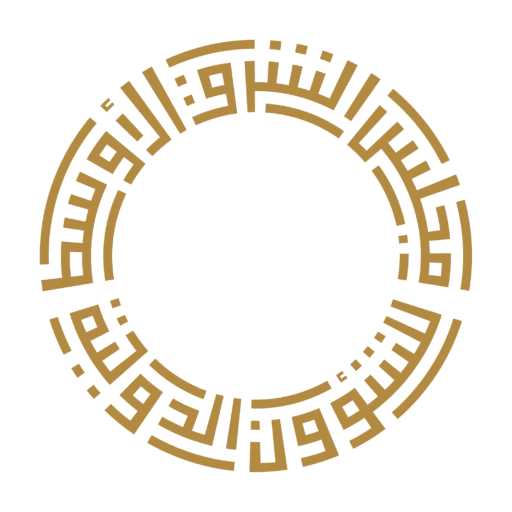
Navigating Rocky Waters:
GCC Strategies for Maritime Security
Policy Note, November 2025
Introduction
The maritime domain is increasingly central to national security and strategic economic planning in the Gulf. Dependence on hydrocarbon transportation has long made a functioning maritime order vital for Gulf Cooperation Council (GCC) member states. In recent years, however, a stable, rules-based maritime system has become even more important as the Gulf states increasingly invest in the development of their non-energy related maritime sectors through major investments in state-of-the-art fleets, facilities and infrastructure, maritime sustainability programs, and next-generation maritime technologies, including the adoption and integration of artificial intelligence (AI) across port ecosystems.
This policy note argues that regional actors are doubling down on securing the maritime domain in four distinct, but overlapping, ways. It further argues that while these moves may appear contradictory, taken together they reflect changing geopolitical realities in an increasingly multicomplex world, in which power is more diffused than ever and uncertainty over U.S. security guarantees is growing.
In recent years, Saudi Arabia’s Ministry of Transport has rolled out a smart port initiative (Mawani), integrating AI-based security and safety systems across its port network.1 Similarly, the United Arab Emirates’ Satgate project looks to enhance maritime operations using satellite and AI technologies.2 These programs are facilitating the Gulf states’ economic diversification beyond energy by making regional economies more attractive for inward investment and technology transfer, as well as better able to create jobs and generate non-hydrocarbon revenues. The maritime sector is increasingly viewed as vital to regional efforts to build societal resilience and future prosperity through increased competitiveness and sustainability.
Oman, for instance, is using the Duqm port industrial city, located near the midpoint of its coastline, and the Port of Salalah to the south, to establish itself as a major trans-shipment hub between the Middle East, East Africa, the Indian subcontinent, and East Asia.3 Dubai’s state-owned maritime logistics company, DP World, is doing the same from its base in Jebel Ali. 4 Qatar, having established itself in the last decade as a notable player in the world of containerized ports, is now also attempting to take advantage of its state-of-the-art port infrastructure and free zones to enhance its position as a re-export hub for select high-value products.
At the same time, all six GCC states must contend with numerous naval security issues. These include the threat of naval warfare—especially between the United States and Iran, not only in the Arabian Gulf, but across the Gulf of Oman, the Gulf of Aden and the Red Sea, as well as the wider Indian Ocean. The GCC states are also particularly wary of future scenarios in which the United States might entangle them in the militarization of U.S.-China tensions in the maritime domain. Other concerns include terrorism and piracy, organized crime, smuggling, and the trafficking of illicit goods. Yet for much of their existence, the GCC states have had limited capacity to resolve most of these maritime challenges through their own use of hard power. These considerations have pushed them to secure their surrounding seas through four main strategies:
Cooperation with the U.S. on Maritime Security
In the last five years, all of the GCC states, apart from the UAE, have deepened their involvement in the U.S.-led Combined Maritime Forces (CMF), which comprises five task forces, each with a specific role. Headquartered in Bahrain, Combined Task Force (CTF) 152 provides security across the Gulf. More than half of its commanders have been from the GCC states or Jordan. CTF 152 also coordinates local naval responses to threats across the Arabian Gulf and serves as a single point of contact between these states’ national Naval Operations Centers.5
The GCC states are also increasingly active participants in CTF 153, established in April 2022 to address rising threats from the Houthis in Yemen in the waters around the Bab al-Mandeb Strait. As part of this force, Saudi Arabia has actively deployed its Western Fleet, a shift from previous major Saudi contributions to the CMF, which were through its Eastern Fleet, based at Al-Jubail within the Gulf.6 Even the UAE, which withdrew from the CTF in 2023 after 19 years of involvement, remains a founding member (along with Saudi Arabia and Bahrain) of the International Maritime Security Construct (IMSC),7 a coalition co-led by the United States and the United Kingdom, that was launched in 2019 to address rising insecurity around key chokepoints like the Strait of Hormuz.
Maritime AI and Naval Tech
Alongside military deployments, all six GCC states have actively attempted to embed themselves in the cutting-edge naval AI and strategic technology programs run by U.S. Central Command (CENTCOM). This has primarily been under the banner of Task Force 59 (TF-59). Established in 2021, TF-59 is the U.S. Navy’s first force to focus on the operational deployment of unmanned systems and AI, and is responsible for integrating these systems into naval operations within CENTCOM’s area of responsibility. 8
Bahrain is one of CENTCOM’s two operating hubs for naval AI and unmanned systems. Within TF-59’s first year, Bahrain and the United States signed an agreement on bilateral cooperation in naval AI, then cooperated on integrating MANTAS T-12 unmanned surface vessels (USVs) into joint operations, and on the deployment of AI for maritime surveillance.9 Since then, the GCC states have also participated in several major CENTCOM AI-focused maritime exercises.
Such cooperation provides the GCC states with valuable access to cutting-edge technology in priority areas such as multi-system command and control and real-time intelligence-gathering, surveillance and detection. The GCC states are also central participants in CENTCOM’s “Digital Ocean” program. This comprises hundreds of floating sensors across the approximately 3.2 million square miles of international waters that make up CENTCOM’s area of responsibility.
Fleet Expansion and Indigenous Production
In parallel with deepening technological cooperation with U.S. naval forces, all six GCC states have engaged in ambitious fleet expansions, and increased their efforts to localize naval defense spending through the development of indigenous naval industrial sectors. Established in 2017, Saudi Arabia’s General Authority for Military Industries (GAMI) and Saudi Arabian Military Industries (SAMI) oversee key programs including the Saudi Naval Expansion Program II (SNEP-II), a multi-billion-dollar initiative to modernize the Royal Saudi Naval Forces in cooperation with external partners, focusing on the Eastern Fleet that operates within the Gulf. An important component of SNEP-II is the Tuwaiq Project to procure Multi-Mission Surface Combatant (MMSC) ships, advanced frigate-sized warships modelled on the U.S. Freedom-class Littoral Combat Ship.10
The UAE is also bolstering its fleet. Between 2018-2024, Abu Dhabi ordered frigates from France, naval weapons from Italy, patrol craft from the Netherlands, corvettes from Singapore and an amphibious assault ship from Indonesia.11 Alongside a major build-up in its hard power assets, the UAE can also claim the Gulf’s most advanced indigenous naval industrial program. The EDGE Group and its subsidiaries, including Abu Dhabi Ship Building (ADSB), have developed a range of manned and autonomous naval vessels, as well as other naval technology, both independently and in collaboration with overseas partners.12
Qatar, too, has embarked on a major naval expansion in recent years, primarily in cooperation with Turkish and Italian partners. These purchases have included naval helicopters equipped for anti-submarine warfare, corvettes with a long-range air-defense-at-sea capability,13 and fast-attack naval craft with advanced radar and electro-optics.14 Bahrain and Kuwait are both gradually enhancing their coastal capabilities, primarily through collaborations with non-GCC partners.15 Oman has commissioned Türkiye’s HAVELSAN to modernize the command-and-control systems of its entire fleet.16
New Naval Partners
GCC states are also taking concrete steps to diversify their bilateral and multinational maritime security partnerships beyond U.S.-led frameworks. These efforts are taking place in the regional maritime domain where most of the world’s top naval powers are active—notably the United States, China, Russia, the United Kingdom, Japan, India, Indonesia, France, South Korea, Italy and Türkiye. In 2024, Oman and the European Union Naval Force’s Operation Atalanta (formerly EUNAVFOR Somalia) signed an agreement to cooperate on information-sharing, coordination, and logistics.17
In recent years, India has participated in bilateral exercises with all six GCC states. In 2022, it deployed a squadron of training ships to the Gulf. It has also increased its naval cooperation with GCC states over strategic port access, including the use of Duqm Port; multilateral exercises, such as a India-UAE-France exercise in the Gulf of Oman in 2023; and defense agreements, primarily aimed at fostering interoperability with Gulf navies.18
This dual approach of doubling down on U.S. security dependence while simultaneously diversifying sources of naval firepower and increasing ties with a range of maritime security partners other than the United States may appear contradictory. But, as noted, it reflects changing geopolitical realities and uncertainty over Washington’s commitment and effectiveness when it comes to providing regional security, including within the maritime domain.
It is notable that among the GCC states, only Oman has participated in the annual “Marine Security Belt” exercises held by Russia, China, and Iran.19 However, all of the GCC states have developed positive relations with China in the maritime domain, as well as across other economic and technological areas. At the same time, despite the GCC states’ naval ties with the United States, only Bahrain participated in Operation Prosperity Guardian, the U.S.-led naval coalition launched in December 2023 to respond to Houthi attacks on shipping in the Red Sea.20
The Interconnectivity Model
Such pragmatic strategic positioning is also evident in the growing tendency of GCC states to view the maritime domain as a resource in itself—a soft power asset that can be used to foster connections across the international system in ways that allow them both to consolidate their security and become more effective and influential international actors.
For the Gulf states, maritime connectivity is a strategy focused on converting economic outcomes in the maritime space into soft power. Oman, for example, uses its port ecosystem as a soft power instrument to interconnect as a geographically convenient, geopolitically reliable maritime base located outside the Strait of Hormuz and thus away from port overcapacity, chokepoints, and other maritime security vulnerabilities within the Gulf.
The UAE’s approach to interconnectivity revolves around DP World’s ownership and management of 60 container and non-container maritime terminals across five continents.21 By successfully linking its sophisticated port network to its geopolitical and security interests across multiple regions, the UAE has been able to compensate for traditional power disparities with larger regional and global actors in its quest to establish itself as an emerging power on the international stage.
Qatar’s interconnectivity ambitions have revolved around its seabound liquefied natural gas (LNG) exports to Latin America, Europe, Asia and increasingly Africa. The vital link between maritime interconnectivity and national resilience was one of the major lessons of the 2017 Gulf crisis.22 Doha’s maritime mobilization during this unprecedented disruption of intra-Gulf relations was not only essential to ensuring stable and sustainable supply chains; its ability to sustain links to gas customers across the globe enabled Qatar to defend its core strategic interests and explore new opportunities even during the blockade. This, in turn, underscored the importance of deep connectivity with global partners in offsetting regional isolation.
In these ways, policy actors across the Gulf have innovatively used maritime-mercantile power to amplify their agility. They have also demonstrated four other important shared traits:
- A tolerance for high-risk, high-cost strategies with medium-to-long term benefits.
- A willingness to enter innovative and long-term partnerships with external actors.
- An understanding of the value of cooperation that fosters interdependence, whereby one’s fortunes are inextricably tied together with those of other actors.
- A commitment to pragmatism at the policymaking level, in support of their long-term strategic positioning.
While such strategies bring economic benefits, strategic depth and prestige, it should not be forgotten that the soft power delivered by interconnectivity can create the same hostilities among competitors and even partners as those engendered by harder forms of power. Despite this risk of “soft-disempowerment,” as coined by Brannagan and Giulianotti,23 harnessing maritime interconnectivity as a soft power resource also has major benefits.
Conclusion
None of the above rules out other forms of Gulf engagement in the maritime domain in the future. The GCC states will continue to expand their hard power naval capabilities, both through foreign defense acquisitions and, in some cases, through increasing domestic production. Saudi Arabia, for instance, has an ambitious goal of producing 100% of its new naval vessels domestically by 2030.24
The Gulf states will also continue to be enthusiastic participants in international maritime security coalitions led by major regional and extra-regional maritime powers across the wider Indian Ocean. In due course, they may even look to establish and lead their own maritime security coalitions. Saudi Arabia has already created a precedent for this with the launch in 2020 of the Council of Arab and African States Bordering the Red Sea and Gulf of Aden, with a mandate of developing economic, political, and defense cooperation among its members.25
All six GCC states will continue to develop and refine policies and programs that prioritize deepening their interconnectivity in the maritime domain in ways that deliver diversification and security at home, offer opportunities to shape the maritime order, and expand their influence far beyond their shores.

